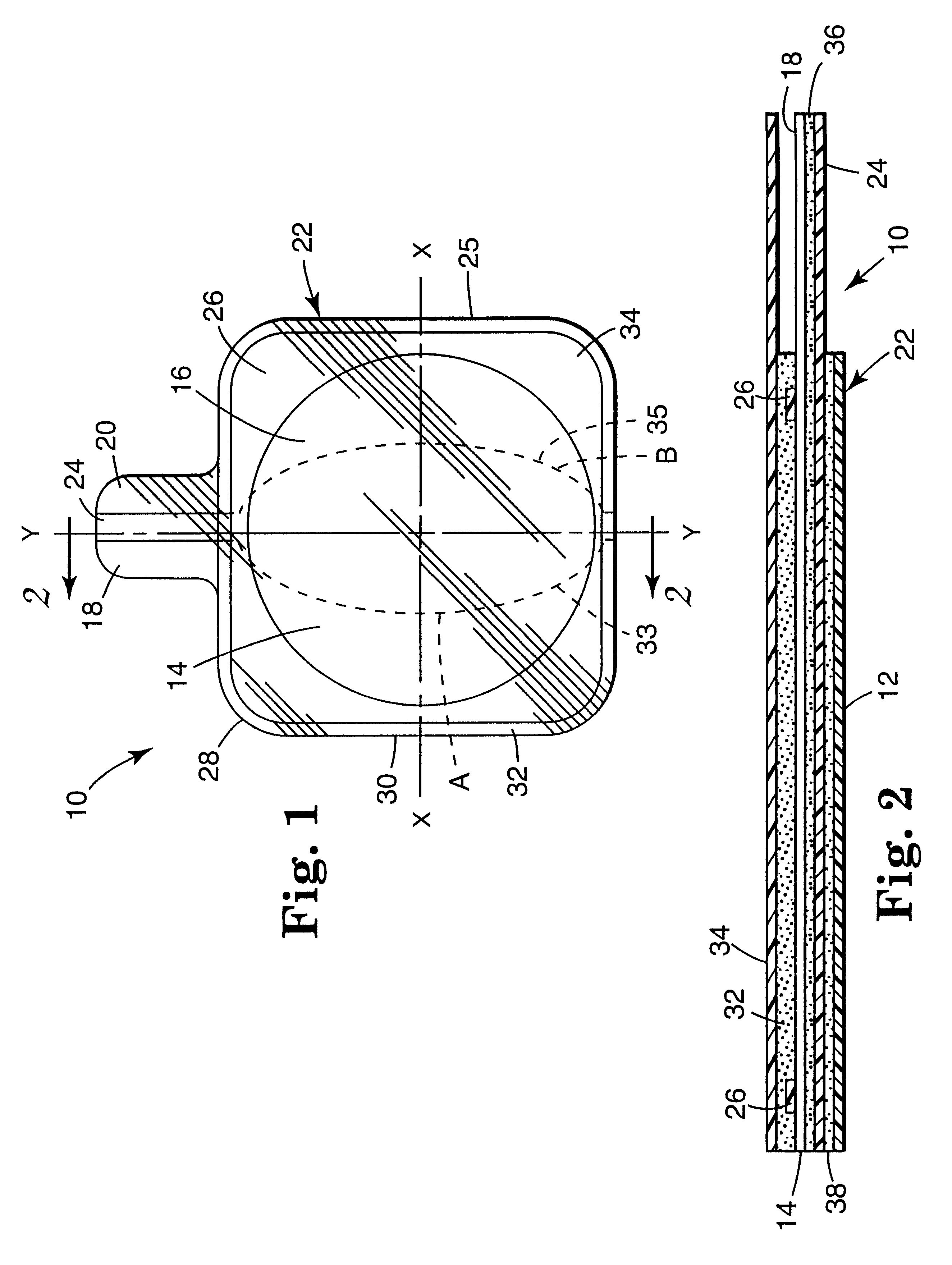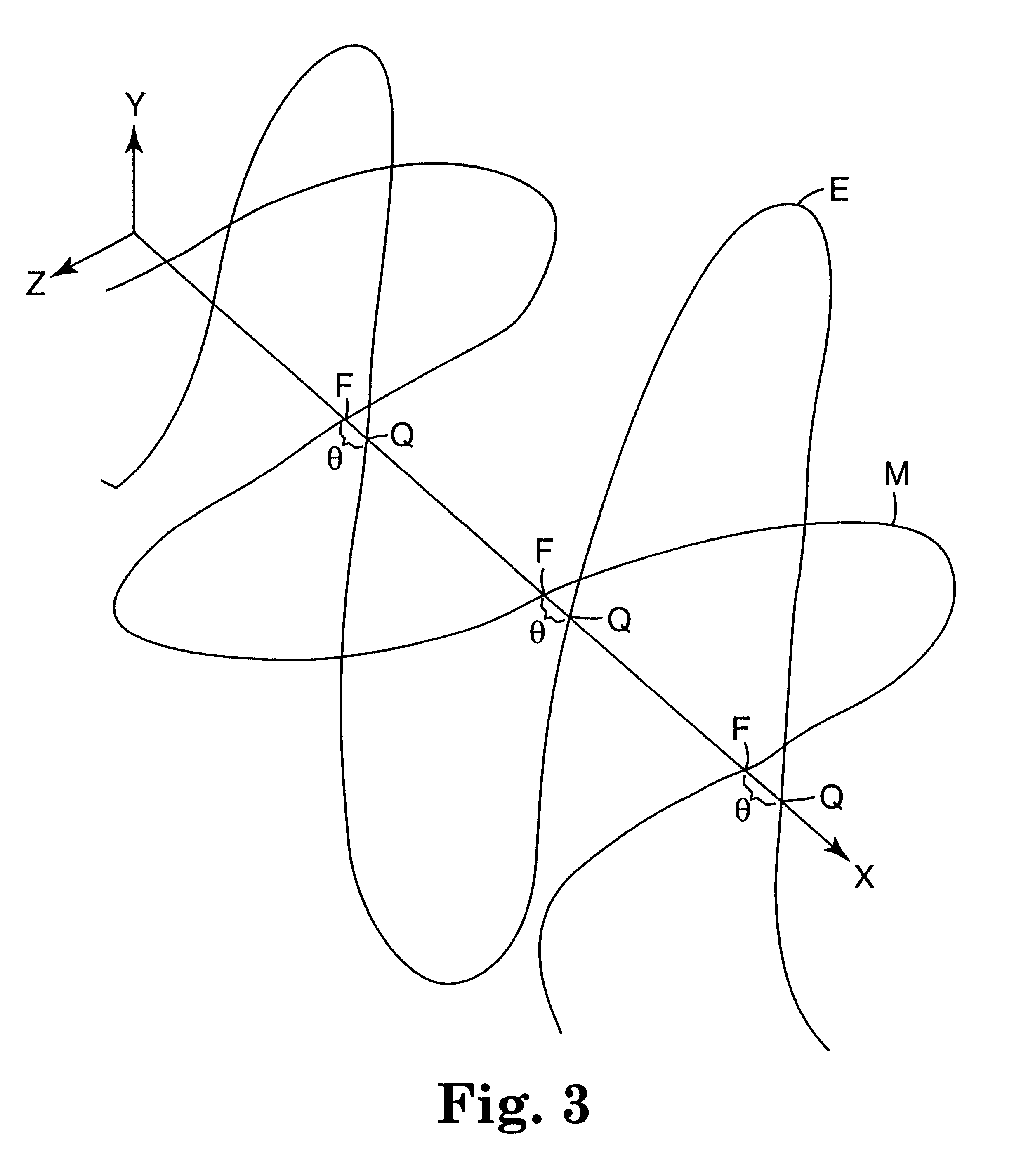Method and apparatus for controlling contact of biomedical electrodes with patient skin
a biomedical electrode and patient skin technology, applied in the field of biomedical electrode control, to achieve the effect of minimizing the maximum rise in tissue temperature and superior method of biomedical electrode li
- Summary
- Abstract
- Description
- Claims
- Application Information
AI Technical Summary
Benefits of technology
Problems solved by technology
Method used
Image
Examples
Embodiment Construction
An electrode was constructed according the following procedure. An electrode was constructed from a 129 cm.sup.2 cm (20 square inches) of Aluminum foil having corners with a radius of 2.54 cm. A layer of conductive adhesive was prepared according to the following procedure. Into a 300 gallon kettle equipped with overhead stirrer and a cooling jacket was charged 562.8 pounds (255.5 kg) acrylic acid, 1.4 pounds (636 grams) 2,2-dimethoxy-2-phenyl acetophenone, 2.8 pounds (1273 grams) 4-(2-hydroxyethoxy)phenyl-(2-hydroxy-2-methylpropyl)ketone, 1.12 pounds (508 grams) methylene bis(acrylamide), 1251.6 pounds (568.2 kg) glycerin, 2.8 pounds (1273 grams) guar gum, and 459.6 pounds (208.7 kg) deionized water. To the well stirred solution was charged 499.8 pounds (226.9 kg) 50% aqueous NaOH portionwise maintaining the batch temperture below 38.degree. C. The hydroxide line was rinsed into the kettle with an additional 18 pounds (8.2 kg) deionized water and stirred for 30 minutes to yield coa...
PUM
 Login to View More
Login to View More Abstract
Description
Claims
Application Information
 Login to View More
Login to View More - R&D
- Intellectual Property
- Life Sciences
- Materials
- Tech Scout
- Unparalleled Data Quality
- Higher Quality Content
- 60% Fewer Hallucinations
Browse by: Latest US Patents, China's latest patents, Technical Efficacy Thesaurus, Application Domain, Technology Topic, Popular Technical Reports.
© 2025 PatSnap. All rights reserved.Legal|Privacy policy|Modern Slavery Act Transparency Statement|Sitemap|About US| Contact US: help@patsnap.com



